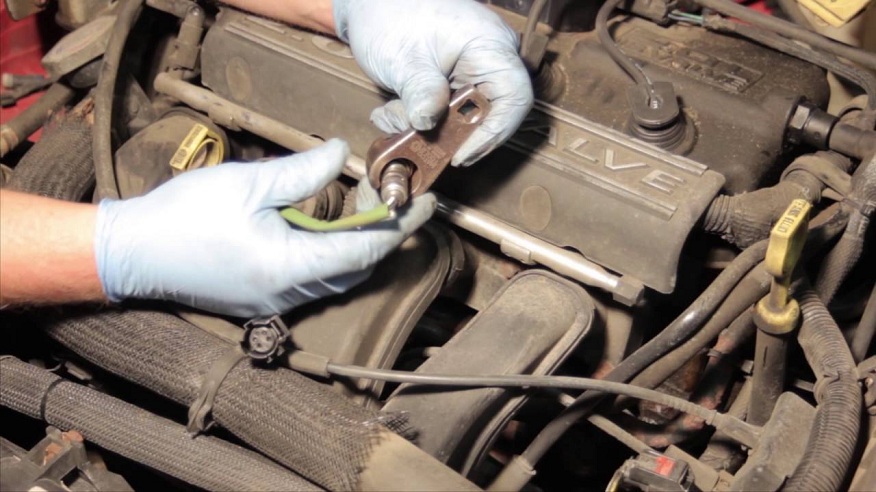Understanding When to Clean Your Oxygen Sensor
Your vehicle’s oxygen sensor plays a crucial role in maintaining optimal engine performance and fuel efficiency. Over time, however, this sensor can accumulate deposits and contaminants, affecting its functionality. Knowing when to clean your oxygen sensor is essential for ensuring a healthy engine and maximizing fuel efficiency. In this comprehensive guide, we’ll explore the signs that indicate it’s time for a clean, the benefits of regular maintenance, and the role of an oxygen sensor cleaner in this process.
The Vital Role of the Oxygen Sensor
What Does the Oxygen Sensor Do?
- Monitoring Oxygen Levels:
- The oxygen sensor measures the amount of oxygen in the exhaust gases.
- It provides real-time feedback to the engine control module (ECM) to optimize the air-fuel mixture for combustion.
Signs It’s Time to Clean Your Oxygen Sensor
Decreased Fuel Efficiency:
- Symptoms:
- Reduced miles per gallon (MPG).
- Frequent refuelling.
- Indication:
- A dirty oxygen sensor can lead to an incorrect air-fuel ratio, resulting in decreased fuel efficiency.
Check Engine Light (CEL) Activated:
- Symptoms:
- The CEL illuminates on the dashboard.
- The onboard diagnostics system reports oxygen sensor-related trouble codes.
- Indication:
- Accumulated deposits may trigger sensor malfunctions, prompting the CEL to signal a potential issue.
Rough Engine Performance:
- Symptoms:
- Rough idling or hesitation during acceleration.
- Engine misfires or stalls.
- Indication:
- Contaminated oxygen sensors can disrupt the engine’s combustion process, leading to performance issues.
Emission Test Failures:
- Symptoms:
- Failure to meet emissions standards during testing.
- High levels of pollutants in the exhaust.
- Indication:
- A dirty oxygen sensor can contribute to increased emissions, causing test failures.
The Benefits of Cleaning Your Oxygen Sensor
Improved Fuel Efficiency:
- Optimized Combustion:
- Regular cleaning ensures accurate readings, allowing the ECM to adjust the air-fuel mixture for optimal combustion.
Prolonged Sensor Lifespan:
- Preventing Buildup:
- Cleaning prevents the buildup of carbon deposits, extending the lifespan of the oxygen sensor.
Enhanced Engine Performance:
- Smooth Operation:
- A clean sensor contributes to smoother engine operation, reducing instances of rough idling or misfires.
Reduced Emissions:
- Environmentally Friendly:
- Cleaning the oxygen sensor helps maintain lower emissions, promoting a more eco-friendly driving experience.
How to Clean Your Oxygen Sensor
Locate the Sensor:
- Identify the oxygen sensor’s location in the exhaust system.
- Refer to the vehicle’s service manual for guidance.
Remove the Sensor:
- Use the appropriate tools to remove the oxygen sensor.
- Exercise caution to avoid damaging the sensor or surrounding components.
Cleaning Process:
- Mechanical Cleaning:
- Use a soft brush or wire brush to remove deposits gently.
- Be mindful not to damage the sensor’s delicate components.
- Chemical Cleaning:
- Apply an oxygen sensor cleaner to dissolve stubborn deposits.
- Follow the product instructions for safe and effective use.
Reinstallation:
- Reinstall the cleaned sensor using the proper torque specifications.
- Ensure a secure fit to prevent leaks.
- Clearing Trouble Codes:
- Use an OBD-II scanner to clear any trouble codes stored in the ECM.
- Confirm that the CEL is no longer illuminated.
When to Use Oxygen Sensor Cleaner
Routine Maintenance:
- Consider cleaning the oxygen sensor as part of routine vehicle maintenance.
- Follow the manufacturer’s recommended service intervals.
Signs of Degradation:
- If you observe signs of decreased fuel efficiency, rough engine performance, or a triggered CEL, it’s advisable to use an oxygen sensor cleaner.
Preemptive Measures:
- Proactively cleaning the oxygen sensor can prevent performance issues and maintain optimal engine function.
Conclusion
In conclusion, understanding when to clean your oxygen sensor is pivotal for preserving your vehicle’s performance and fuel efficiency. Regular maintenance, including the use of oxygen sensor cleaner when necessary, ensures that the sensor continues to function optimally.
By paying attention to signs of degradation and incorporating cleaning into your vehicle maintenance routine, you contribute to a healthier engine, reduced emissions, and a prolonged sensor lifespan. A well-maintained oxygen sensor translates to a smoother and more efficient driving experience, aligning with both environmental and economic considerations.

